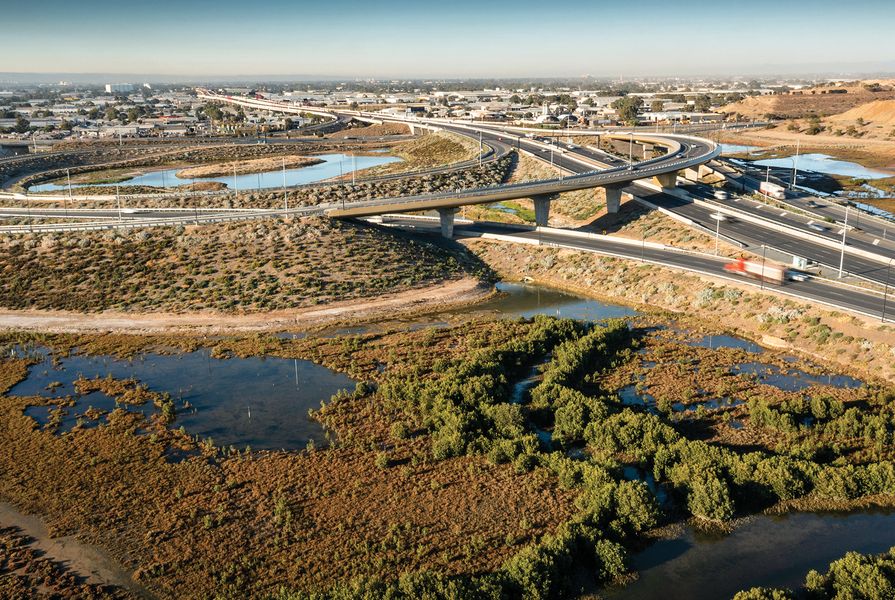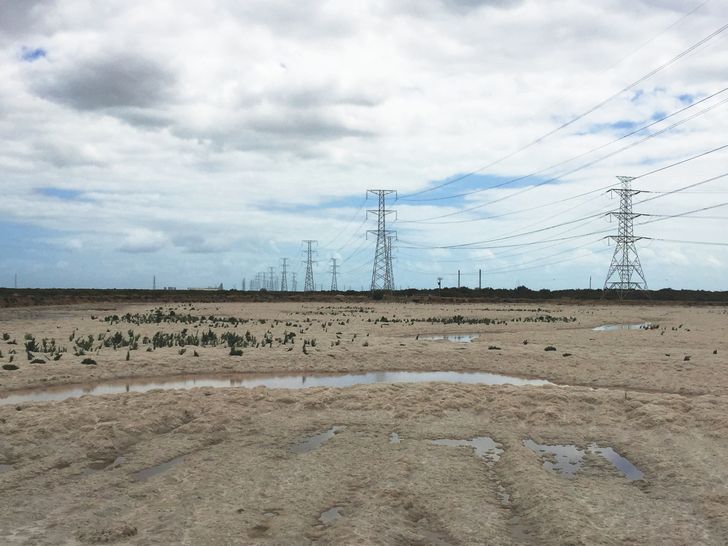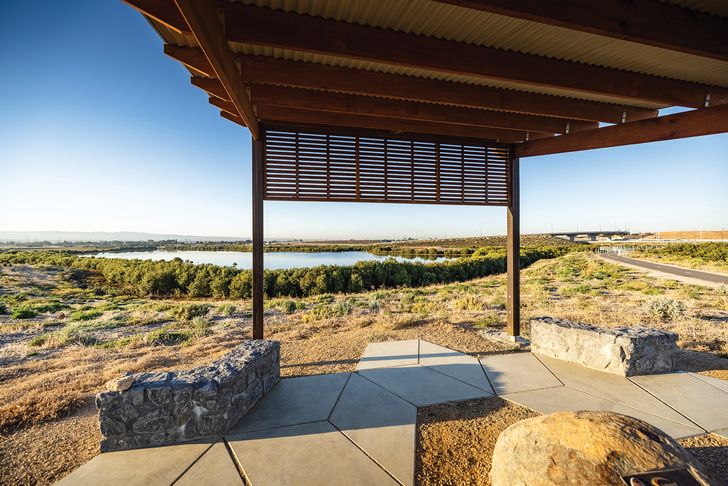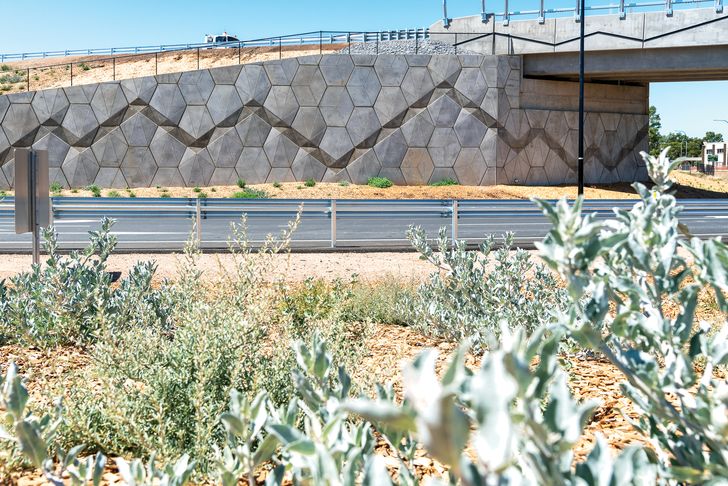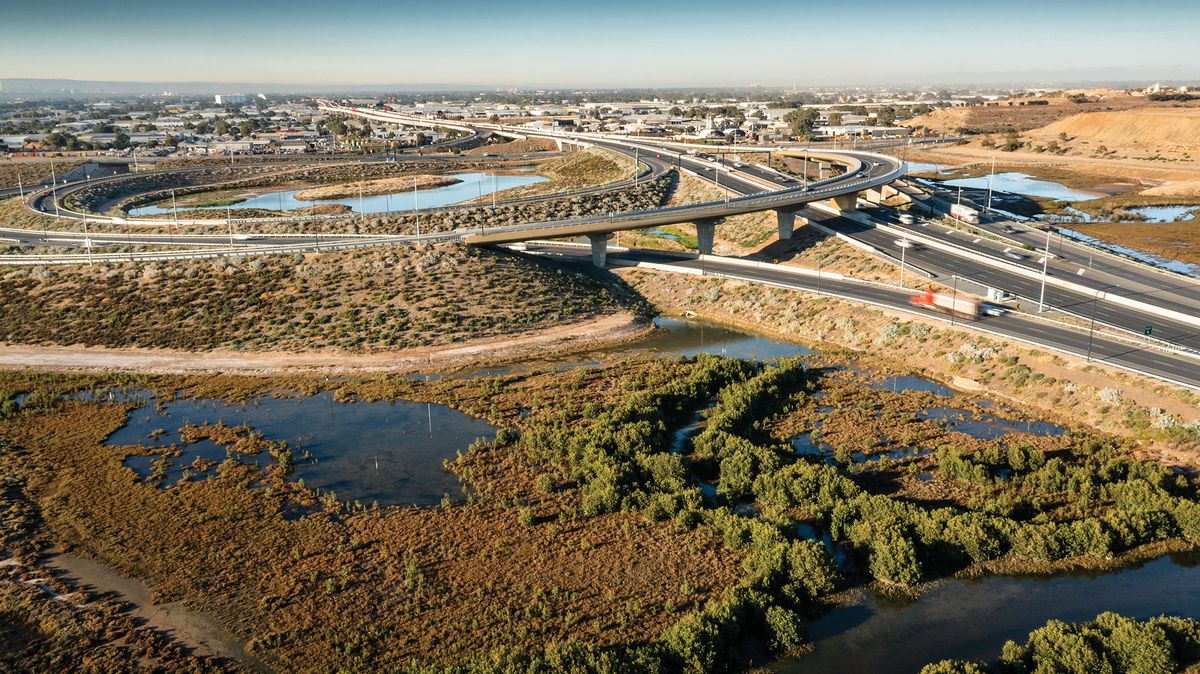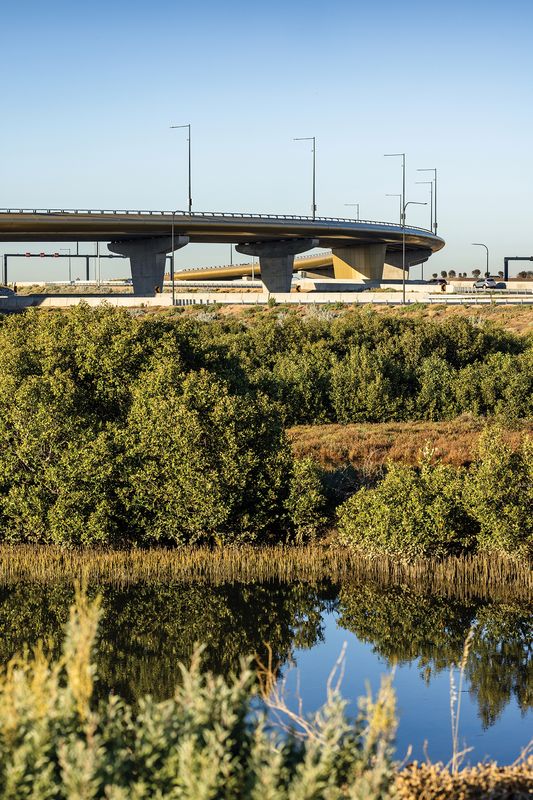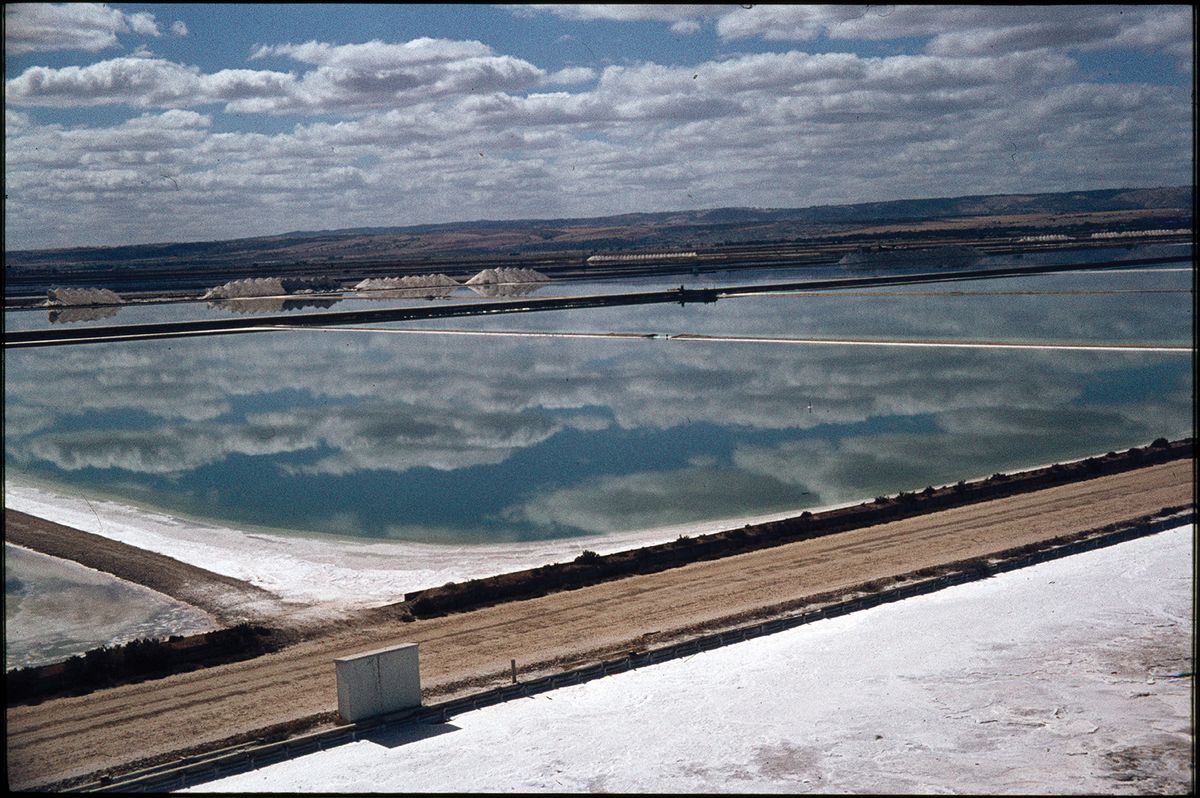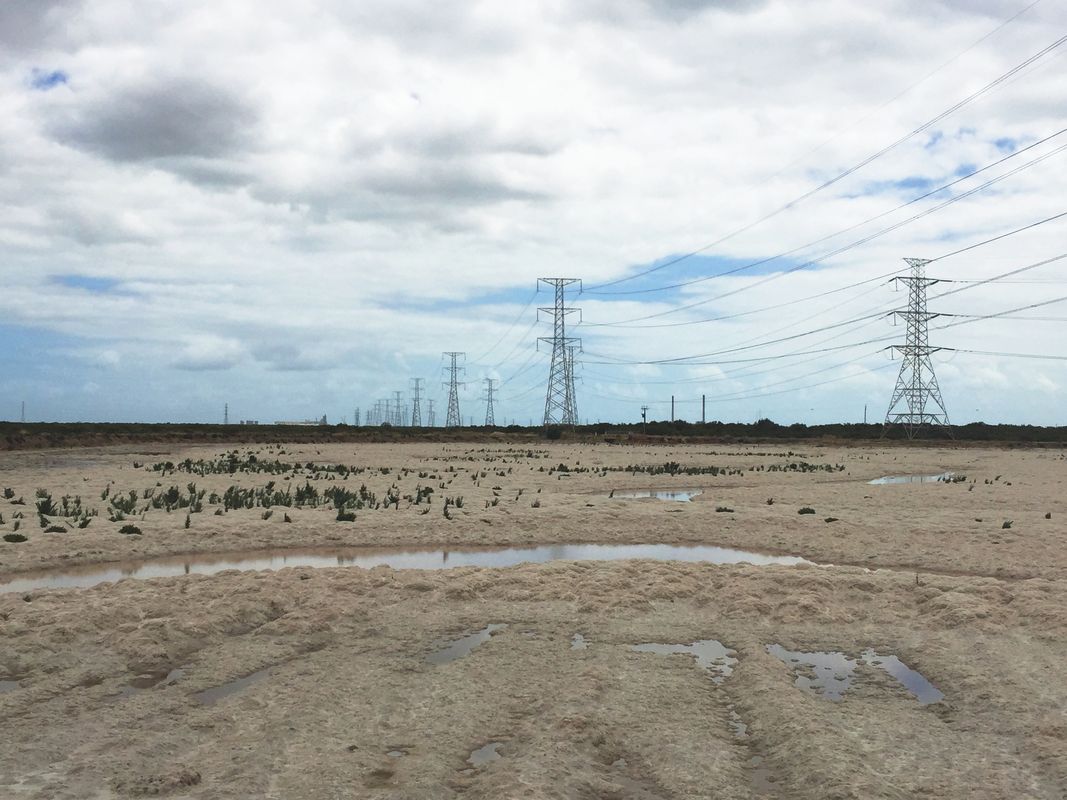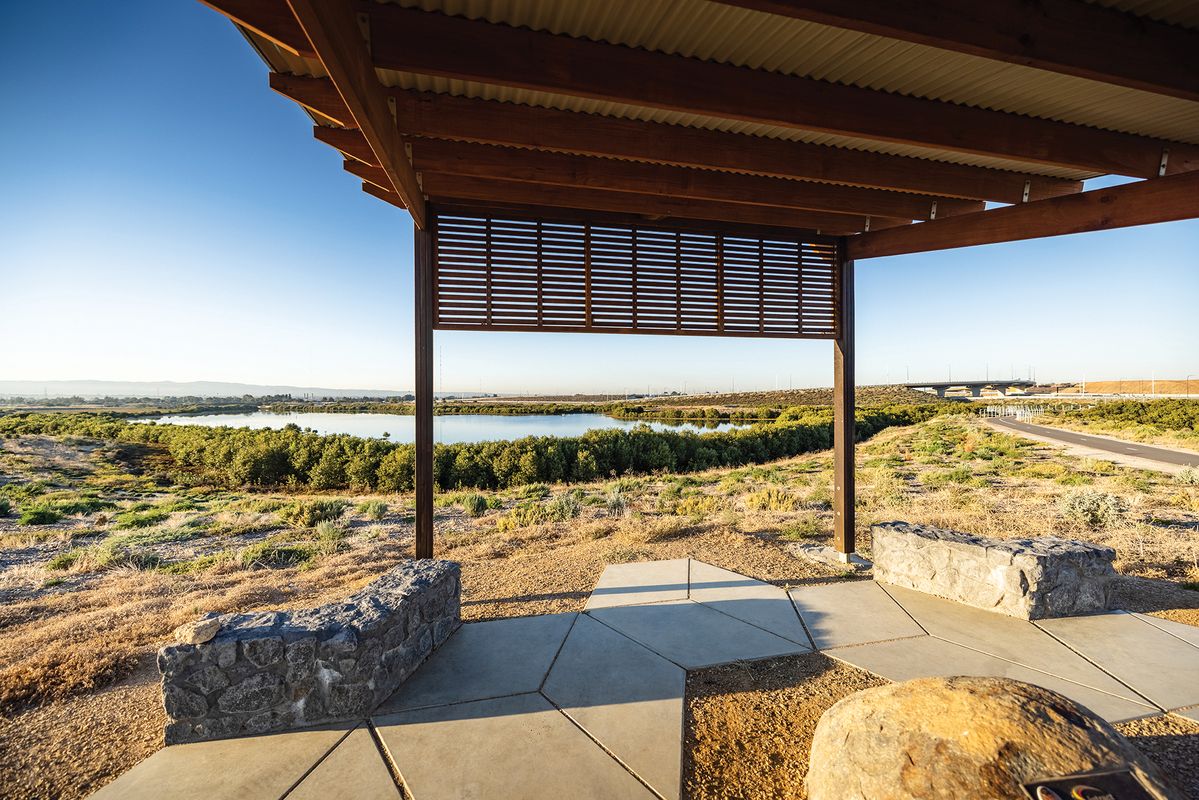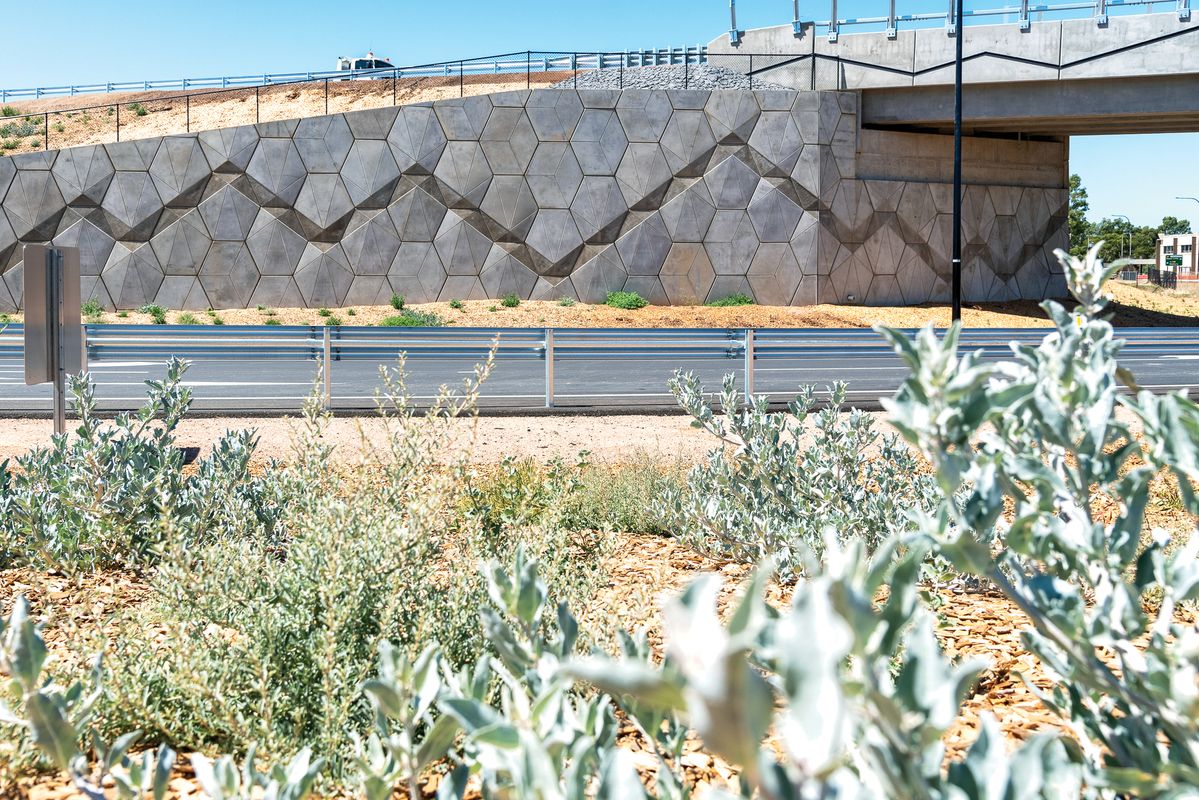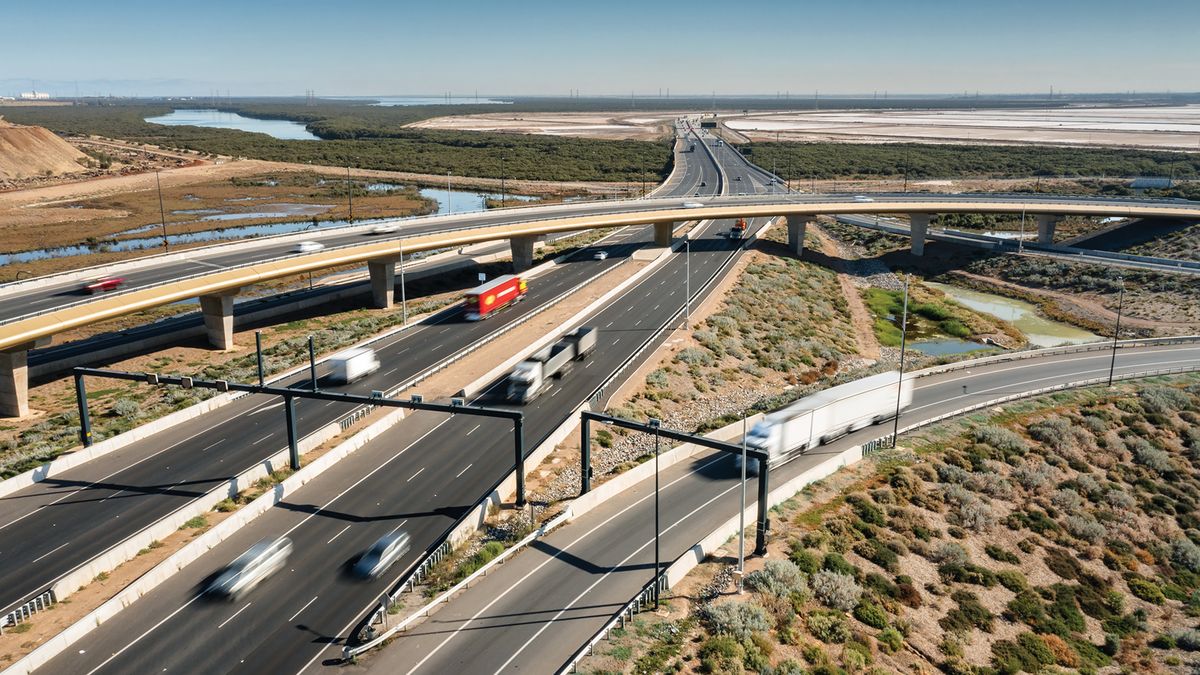The Northern Connector Project is a 15.5-kilometre freeway project in Adelaide’s north. The six-lane freeway was the missing freight and commuter link between the Northern Expressway, the South Road Superway and the Port River Expressway. The region in which the site is located is disturbed by industrial and horticultural activities, most notably the Dry Creek Salt Fields, equestrian land uses associated with the nearby harness racing venue Globe Derby Park, market gardens, other horticultural uses and the Bolivar Sewerage Treatment Works. It also includes the state-heritage-listed Dry Creek explosives magazines, once used for storing imported explosives. In the immediate area, important ecological sites are dominated by mangroves and intertidal samphire ecologies, including the Adelaide International Bird Sanctuary National Park – Winaityinaityi Pangkara and the Adelaide Dolphin Sanctuary. Parts of the area are subject to state and federal environmental protection acts.
The Department for Infrastructure and Transport engaged Lendlease (now Acciona) to deliver this complex project, while Tract was appointed as the urban and landscape designer for the bridge, active transport networks and landscape. In developing the design for the project, Tract drew contextual inspiration from the Barker Inlet and the surrounding market gardens, salt pans and crystalline forms, as well as the migratory bird species that use the wetlands. Ecodynamics, the landscape contractor, was brought in early and also contributed to the delivery, working together with Tract and collaborators Barry Ormsby, Jacobs and Arup. The Office of Design and Architecture South Australia (ODASA) also provided input.
The Northern Connector project includes 850,000 square metres of mulched and planted garden beds and wetlands, and 550,000 square metres of new grass.
Image: Dan Schultz
The brief for the project provided an opportunity to aid in environmental restoration. Disused salt fields, manipulated agricultural soils and disconnected wetland patches provided the team with a multitude of challenges and opportunities. Environmental hazards included hypersaline water, precipitated salts and sulfidic materials, and the fragility of the existing ecology necessitated the putting into place of management systems to ensure the surrounding environment was protected during construction.
Prior to the commencement of the project, re-created wetlands were already in existence, with some part of the early works of the ultimately failed Multifunction Polis (MFP) proposed in 1987 and abandoned in 1998. This earlier constructed wetland work was led by landscape architect Barry Ormsby, who was also consulted on the development of the Northern Connector. While the creation of the Connector has disrupted these existing wetlands – an outcome necessitated by the building of the Port River Expressway/South Road intersection – the designers have taken care to incorporate what remains of this landscape into their overall plan for the site in order to manage water flow. The ribbons of roads weave over and around the new and existing plantings.
The salt pans in January 2015, pre-construction.
Image: Tract
The Northern Connector project, which includes 850,000 square metres of mulched and planted garden beds and wetlands and 550,000 square metres of roadside grass, is one of the largest commercial infrastructure landscape projects ever delivered in South Australia. Given this scale, a major challenge was to source seed stock and propagate tube stock in the enormous quantities necessary for delivery. Here, the design collaborators – Lendlease (now Acciona), Tract, Barry Ormsby, Jacobs and Arup – have successfully tailored a detailed plant list that the local market could provide within what was a tight timeframe for construction. Mulched garden beds were planted with 950,000 tubestock plants, which were 100 percent local indigenous species. Ecodynamics grew 750,000 tubestock at its own indigenous plant nursery in Penfield and outsourced a further 200,000 plants to six other indigenous plant nurseries in the greater Adelaide area. In all there were approximately 90 different species grown for the project, planted across the four major plant community biomes identified in the landscape design brief by Tract – northern saltbush shrubland, Bolivar and Little Para redgum woodland, the saltpan shrubland, and the Barket Inlet wetlands. Landscape structure now forms a backdrop for later improvements. More than 60 of the 90 different plant species selected for the project require specialist germination in nurseries and sensitive planting to succeed in constructed landscapes and simply do not succeed when direct seeded or hydroseeded. As a result, targeted in-fill planting and careful maintenance over the next three years will continue to enhance the landscape and increase the chances of it becoming self-sustainable.
Bird hides and shelters offer respite to walkers and cyclists using the Tapa Martinthi Yala Shared Use Path, which runs alongside the motorway.
Image: Dan Schultz
The Northern Connector is a concrete road (still novel in South Australia), except at the elevated interchanges. While the concrete has a slightly higher initial capital expense than conventional asphalt construction, it is expected to almost halve ongoing maintenance costs. In addition, low-noise diamond grooving has been applied to reduce glare from the light-coloured surface. Driving on this low-slung road is a unique experience, surrounding travellers with the reds, greens and whites of salt and samphire. At times, it feels like driving almost below the landscape. The adjacent mangroves are very close, but one also receives long views of mangroves to the west and hills to the east, with the pink-white salt pans in the foreground. From this perspective, it seems as though the freeway has simply harnessed itself to the site’s existing qualities.
This experience, however, may be short-lived. Over the years, the area has been the focus of many development proposals, including the earlier MFP and canal developments, which – had they gone ahead – would have resulted in a large acid sulfate soil issue. The most recent proposals would see the creation of a large residential development in the south-east section of the crystallizers, the iconic shallow ponds where brine evaporates to create salt crystals. Natural solutions have been largely ignored in this planning. For now, salt mining leases continue over much of the site, and the return of the salt industry still remains a possibility.
In addition to enhancing experiences of the mangroves and salt flats, the incorporation of the project’s shared use path with the final sections of the Tapa Martinthi Yala Shared Use Path is another positive outcome of the development. The path creates a 43-kilometre network of continuous cycling and walking that extends from Gawler to Port Adelaide and provides visitors with the opportunity to get closer to the wetlands and mangroves than they might have otherwise been able. Bird hides and rudimentary shelters in the vicinity allow for shady breaks. The shared-use path along the eastern side of the road was constructed by Intract Indigenous Contractors.
In this case, the need for additional residential land – now conveniently located next to a freeway with fast access into town – has trumped the chance to restore the land and increase habitat. This is perhaps a missed opportunity, given that the Northern Connector sits in the vicinity of the Adelaide Bird Sanctuary. Research has shown that by returning the water cycles and the rhythms of flooding and drying over time, dramatic improvements in soil quality can be produced, along with the natural return of self-seeding vegetation.
The geometric pattern in the freeway noise walls takes inspiration from crystal salt formations, as well as the wings of local shorebirds.
Image: Dan Schultz
The future of dissected segments of salt ponds to the west of the Northern Connector site, which were not part of the original scope of works, is being reviewed, as the land now sits with the state government. The level of these ponds makes them difficult to return to natural mangrove habitat, so constructed wetland solutions are likely to be considered in the future. There are learning opportunities here, as some of the unintended changes to the water regimes across the corridor continue to be managed by various stakeholders.
While providing footings for an elevated freeway as part of the project would certainly have posed significant engineering challenges, the opportunity to restore the salt ponds to the east could have deepened and enriched the ecological value of the project. Instead, the freeways have been designed to act largely as a sea wall, which feels somewhat like a missed opportunity. The Northern Connector project does, however, demonstrate success within the scope that was allowed. As a project, it raises the possibility of exploring an ideal where infrastructure is not merely compensated for, but the surrounding landscape is allowed to function and provide much-needed habitat and green space that begins to undo some of the damage inflicted on the landscape by earlier industrial and agricultural activity.
Plant list
Trees: Allocasuarina verticillata (dropping sheoak); Callistemon salignus (white weeping bottlebrush); Callitris gracilis (southern cypress pine); Corymbia maculata (spotted gum); Eucalyptus arenacea (sand stringybark); Eucalyptus camaldulensis (river red gum); Eucalyptus cneorifolia (Kangaroo Island narrow-leaf mallee); Eucalyptus diversifolia ssp. diversifolia (coastal white mallee); Eucalyptus fasciculosa (pink gum); Eucalyptus leucoxylon (South Australian blue gum); Eucalyptus leucoxylon ssp. megalocarpa (large-fruited blue gum); Eucalyptus porosa (mallee box); Eucalyptus sideroxylon (red ironbark); Eucalyptus socialis (red mallee); Eucalyptus torquata (coral gum)
Seeded grasses and groundcovers: Bromus willdenowii (Matua prairie grass); Cynodon dactylon (couch grass); Festuca arundinacea (tower tall fescue); Lolium rigidum (Wimmera ryegrass); Lolium perenne (perennial ryegrass); Medicago polymorpha var. brevispina (cavalier spineless burr medic); Puccinellia ciliata (pucinella)
Aquatic plants (partial list): Acacia salicina (Broughton willow); Atriplex paludosa ssp. cordata (marsh saltbush); Atriplex vesicaria (bladder saltbush); Disphyma crassifolium (round-leaved pigface); Distichlis distichophylla (Australian salt-grass); Duma florulenta (tangled lignum); Enchylaena tomentosa (ruby saltbush); Ficinia nodosa (knobby club-rush); Juncus kraussii (salt marsh rush); Maireana brevifolia (small-leaf bluebush); Myoporum insulare ‘Prostrate’ (common boobialla); Nitraria billardierei (nitre bush); Rhagodia candolleana (seaberry saltbush); Suaeda australis (austral seablite); Thyridia repens (creeping monkeyflower)
Salt-tolerant plants (partial list): Atriplex cinerea (coast saltbush); Atriplex nummularia (old man saltbush); Atriplex paludosa ssp. cordata (marsh saltbush); Atriplex paradoxa (marsh saltbush); Atriplex vesicaria (bladder saltbush); Distichlis distichophylla (Australian salt-grass); Einadia nutans (climbing saltbush); Enchylaena tomentosa (ruby saltbush); Rhagodia candolleana (seaberry saltbush); Rhagodia crassifolia (fleshy saltbush); Rhagodia parabolica (fragrant saltbush); Rhagodia spinescens (creeping saltbush)
Credits
- Project
- Northern Connector
- Design practice
- Tract Consultants
Australia
- Project Team
- Deiter Lim, Peter Crick, Lisa Coutts, George Gentner, Nathan Noack, Elise Bertret, Travis Stevenson, Sarah Young
- Consultants
-
Contractor
Lendlease (now Acciona)
Landscape contractor Ecodynamics
Structural engineer and project civil engineer Jacobs, Arup
- Aboriginal Nation
- Built on the land of the Kaurna people
- Site Details
-
Location
Adelaide,
SA,
Australia
- Project Details
-
Status
Built
Design, documentation 18 months
Construction 30 months
Website Northern Connector Project
Category Landscape / urban
Type Infrastructure, Outdoor / gardens, Parks, Public / civic, Public domain, Transport
- Client
-
Client name
Department for Infrastructure and Transport
Website Department for Infrastructure and Transport
Source

Review
Published online: 24 Jun 2022
Words:
Tanya Court
Images:
Dan Schultz,
Leonard Rosslyn Ward,
Tract
Issue
Landscape Architecture Australia, May 2022

